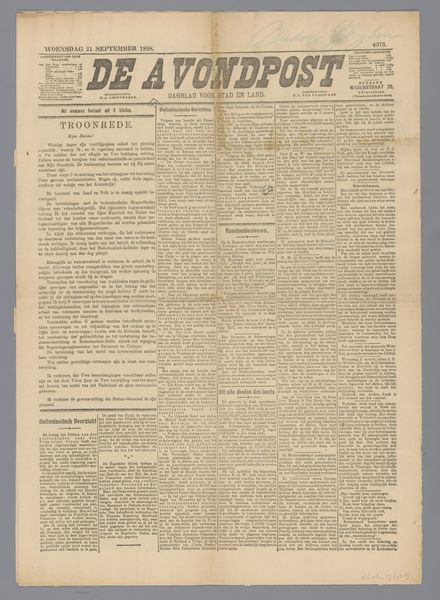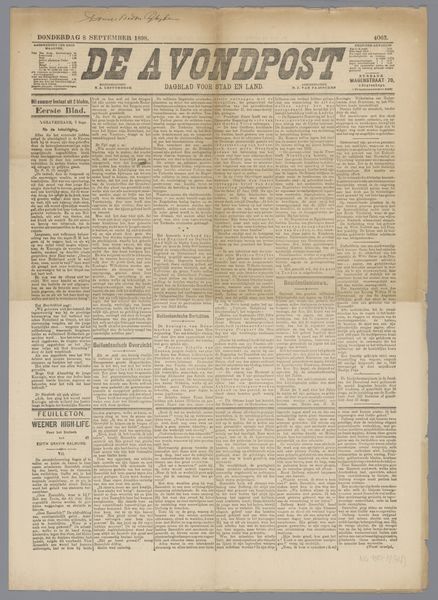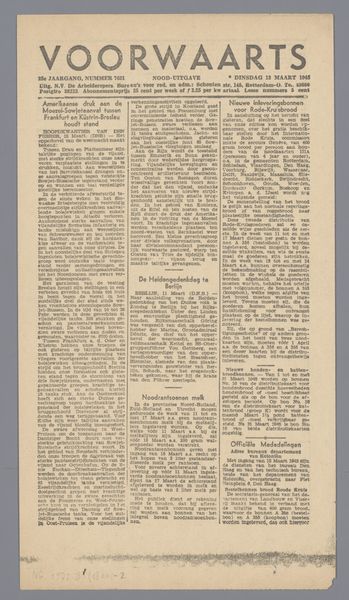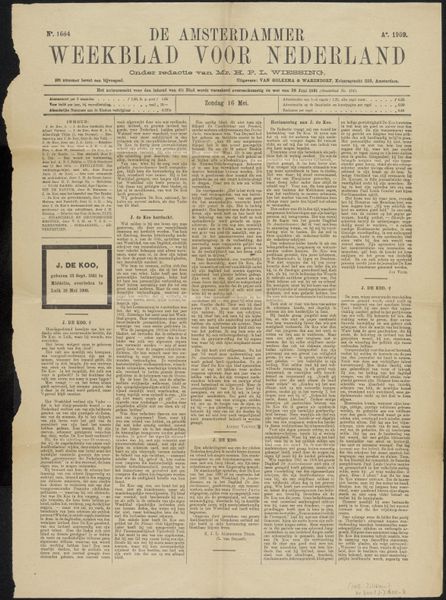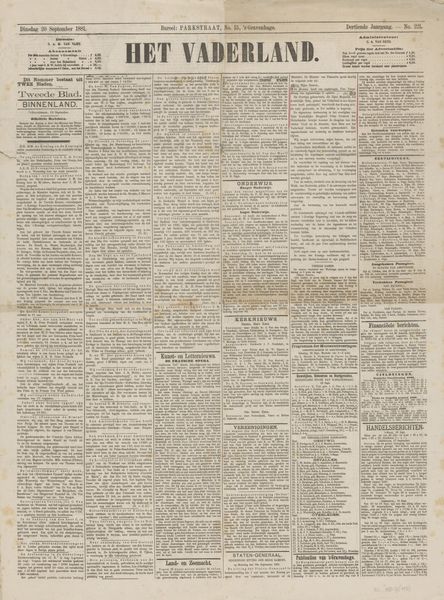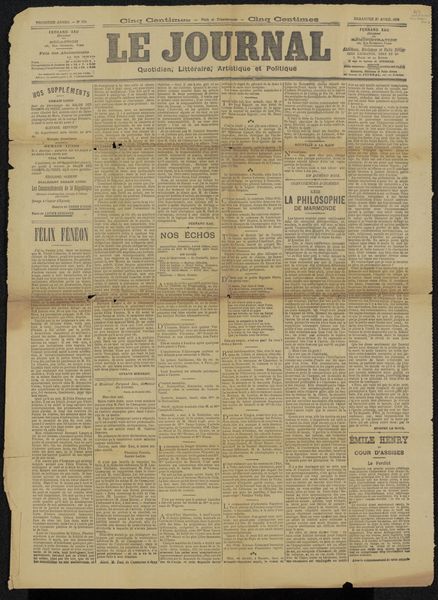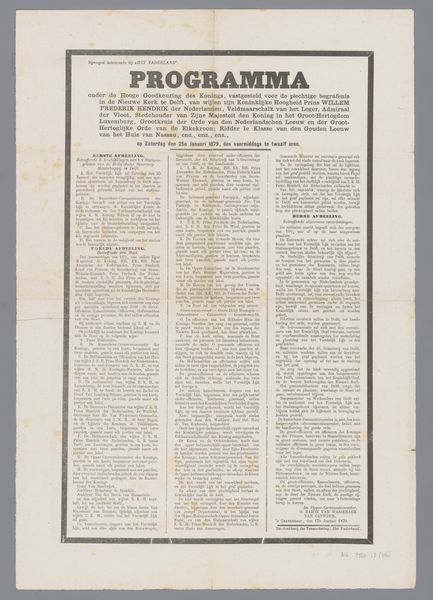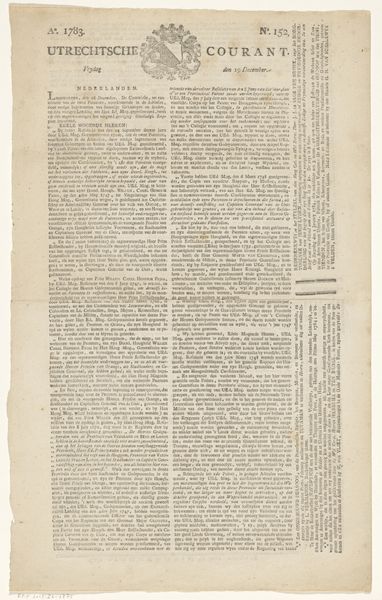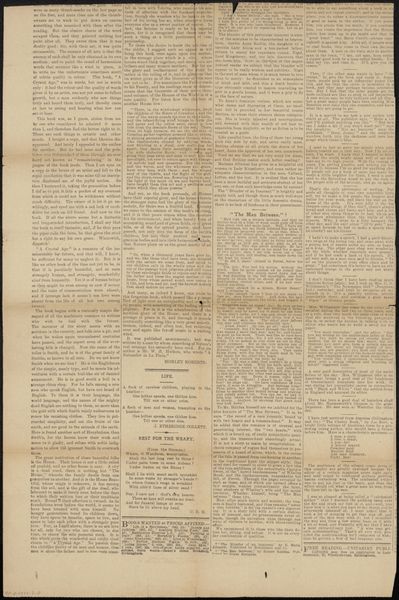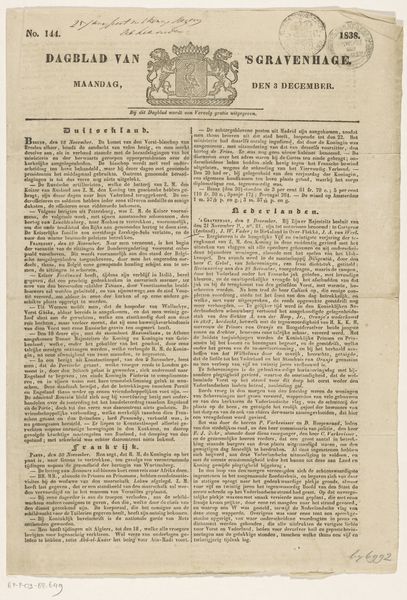
print, paper, typography
#
aged paper
#
newspaper
# print
#
paper
#
typography
#
stylized text
Dimensions: height 55 cm, width 39 cm
Copyright: Rijks Museum: Open Domain
Curator: Here we have “De Avondpost; dagblad voor stad en land”, quite possibly printed between 1898 and 1899. It's currently held here at the Rijksmuseum. The typography immediately strikes me, the weight of the text… what do you see? Editor: It's imposing! Visually dense, you almost feel the weight of information being pressed upon you. It feels distinctly of its time, yet strangely timeless. Curator: The text acts as both a transmitter of news and a cultural symbol. It's interesting how the "aged paper," as noted, contributes to that weight you mentioned. You immediately associate it with history, authority... Editor: Exactly! And considering the function of newspapers, this would have been a key mode of disseminating information, shaping public opinion in a critical era. I think of the role the media has always played, its power for both progress and manipulation, even then. Curator: Yes, the act of printing itself bears weight; typography's evolution reflects technological progress, too, doesn’t it? I consider this object a modern icon representing industrial advances, its very nature entwined with broader narratives of democratization. It suggests this turning point. Editor: Certainly. The Proclamatie grabs the eye. Who did it serve and how would various individuals react to this printed declaration in the street or around a table, shaping people's awareness. Curator: To dive even deeper into meaning, think about newspapers then! The masthead – “De Avondpost” – promising to deliver a comprehensive picture of the world each evening! A stylized text like that suggests stability and permanence amid social transformations, doesn't it? This kind of printing was revolutionary and carried a lot of weight within the country at the time. Editor: True. Reflecting on it, it prompts consideration of power dynamics and access to information at the fin de siècle, particularly in relation to social movements, nationalism, colonialism… it represents much more than what appears at face value. Curator: Indeed, it has sparked further thought and connection, for me, about symbols. Editor: And, from my side, it reinforces the power of art to be evidence!
Comments
No comments
Be the first to comment and join the conversation on the ultimate creative platform.
